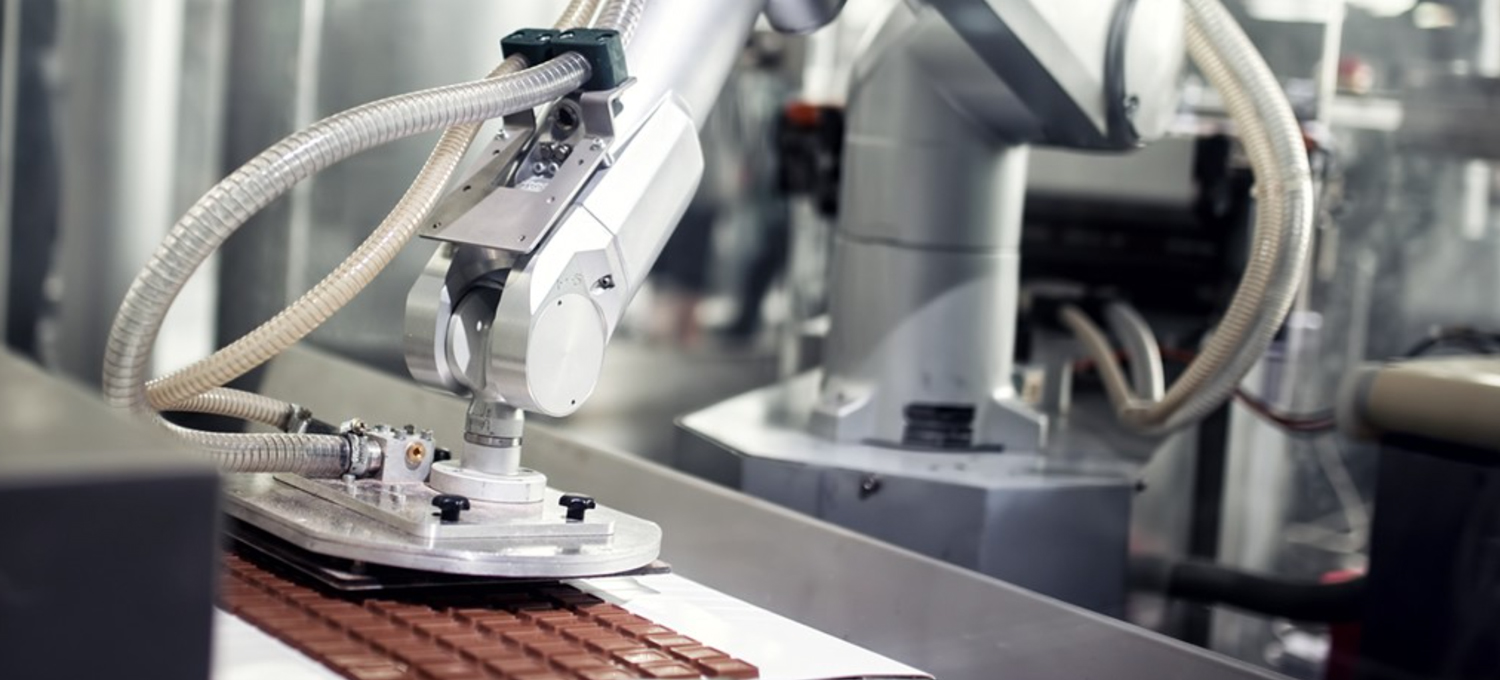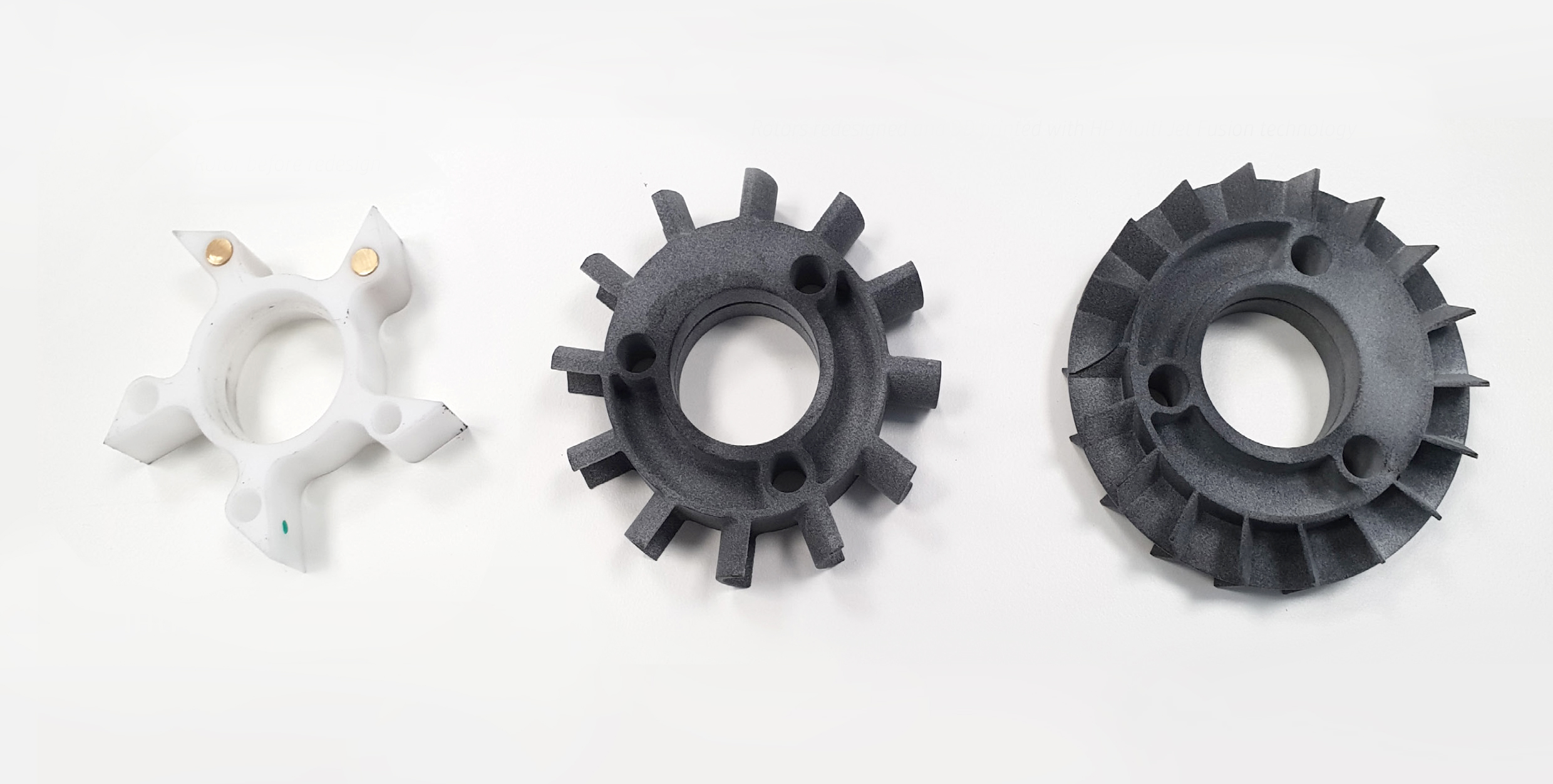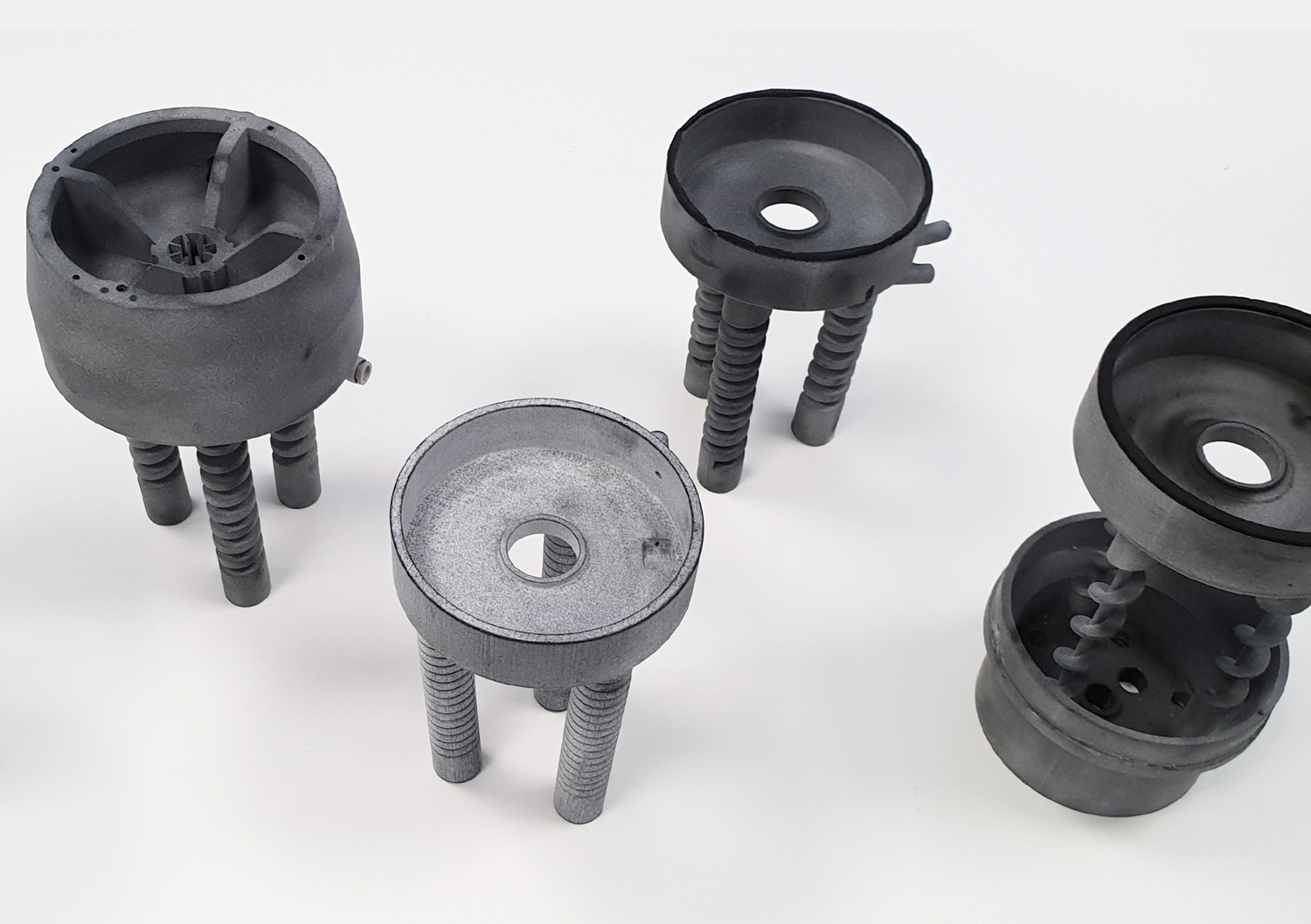Mechatronic – 3D Printed Plastic Impellers
Mechatronic use Multi Jet Fusion (MJF) 3D printing for the production of highly customised industrial equipment components in small batches.
Overview
Mechatronic S.r.l is an industrial automation company headquartered in Castelio di Brianza, Italy; specializing in the production of industrial machines for painting plants.

With more than 20 years of experience, Mechatronic produces customized automated production systems utilizing technology at the intersection of mechanics, electronics and computer science.

Challenge
The production of highly customized industrial equipment components in small batches can be difficult because many traditional manufacturing techniques are not cost effective at these volumes.
Just some of the components that Mechatronic were looking to produce more cost-effectively with 3D printing included a hand-assembled flange for a touchscreen control panel, a metal housing with three rubber buffers, a plastic impeller and an automated cleaning device used to remove any trace of powder from the paint powder basket ahead of the next job.
These components each presented different complexities for traditional manufacturing methods that added considerable design issues, time and costs to production and delivery.
For example: with the cleaning device, the design (specifically the size of the hole direction) was critical in driving the rotation of the device, and the placement of the holes determined how well the device cleaned the sieving structure.
Traditional CNC machining of the part presented more issues than it solved, namely:
- It was impossible to produce all the holes that the part needed.
- Since the metal pipes were the same dimensions everywhere on the device, holes far from the inlet nozzle received less air than holes closer to the nozzle, and therefore cleaning capacity was compromised.
- The balance of the device was compromised and rotation wasn’t perfect.
- Prohibitively expensive as each hole needed to be programmed into the machine separately.
- Two suppliers were needed to manufacture and assemble the part.
- Quality was suspect because some of the holes would close during the assembly welding process.
Key problems with traditional manufacturing options:
Solution
When the Mechatronic team compared MJF polymer parts with CNC plastic parts, they found that the quality was equivalent or better and that the design freedom afforded by MJF allowed them to competitively match the mechanical characteristics of CNC’d metal parts.
According to Luigi Volontè, Mechatronic’s CEO:
“When CNC Machining metal parts, we’ve found that the more complicated the geometry, the more expensive the part. Therefore, we tended to work with simple, sub-optimal geometries that were ‘good enough’ for the job. With [MJF], we simply don’t need to compromise on quality.”
Now, Mechatronic is regularly using the MJF process for production of the touchscreen flange and has completely reinvented its sieve structure by making it almost entirely plastic, with only metal ball bearings to reduce friction during impeller rotation.

The new sieve structure features spiral-shaped legs, which better support the sieve’s weight and absorbs vibrations. The new design better facilitates the cleaning process, while the lightened weight allows for lower air pressure, reducing energy cost.

Result
The aesthetic qualities of components produced with MJF have enabled Mechatronic to create small-batch parts without making compromises.
The strength and other mechanical properties of MJF have allowed Mechatronic to replace some key metal parts with polymer parts. In the past, the sieve structure was heavy, inefficient, and prone to failure. With MJF, the part is both lighter and more productive.
Furthermore, the device was less costly to produce, dropping from €150 p/p with traditional manufacturing technologies to €50 p/p with MJF.
In addition, the design freedom that 3D printing offers has allowed Mechatronic to create parts that work better and more efficiently. The new paint powder cleaning device is better balanced and does a better job of distributing compressed air to the point of need. Furthermore, the part can be produced in one day compared with the multiple weeks it took to produce in metal.
For the makers of industrial equipment, 3D printing with MJF can potentially improve the speed at which they innovate, while also allowing them to improve the overall quality of their products. It also allows them to produce in small batches more cost effectively.
Key advantages of additive manufacture:
Further information
